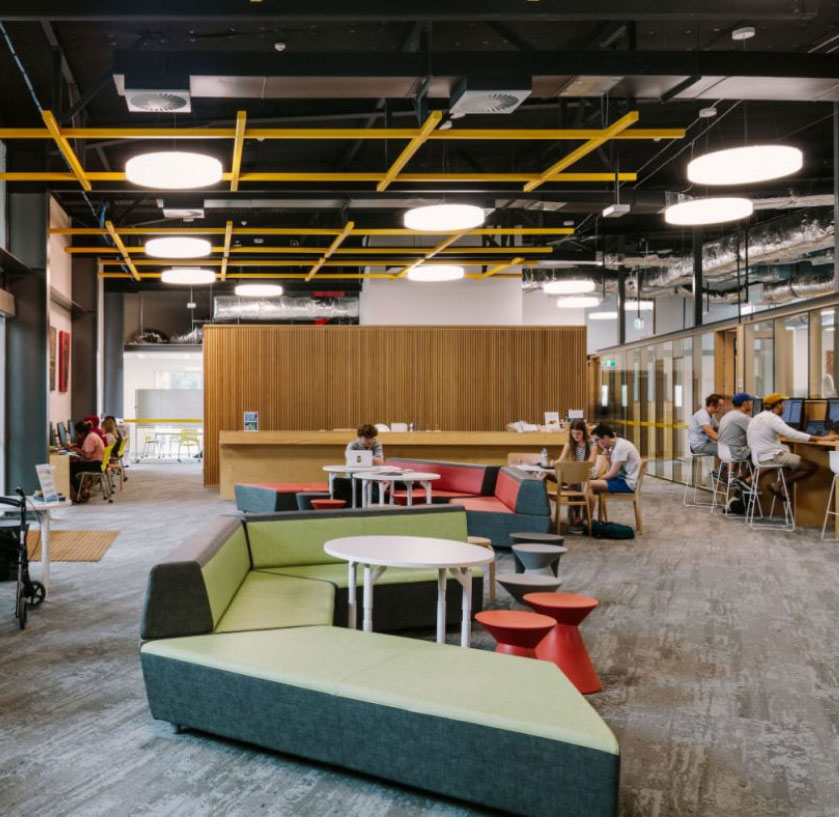February 27, 2023
Innovation that doesn’t make inequality worse
With a range of major policy reviews in 2023, the Australian Government has a unique opportunity to ensure that education, research and innovation policy deliver the broadest public value, rather than exacerbating inequality.
In Australia, we often look to the United States for the lead on science and innovation. But there is an unresolved tension at the heart of current US science and innovation policy.
On the one hand, the Biden Administration is committed to addressing high levels of inequality, recognising that “the benefits of science and technology remain unevenly distributed across racial, gender, economic and geographic lines”.
But on the other, the US government has become increasingly focused on competition with China, framing science and technology as a race for economic and military leadership.
That has resulted in some US agencies trying to re-distribute funding to under-served research institutions and communities, while, under the 2022 CHIPS and Science Act, others are pumping billions into semiconductor R&D, other “critical technology” areas and commercialisation to “win the race for the 21st century”.
We know that American innovation drives competitiveness and delivers a wide range of benefits for society, but it also contributes to problems such as rising inequality and polarisation. Pumping more money into the existing system is not going to help – new approaches are needed to maximise the good and minimise the bad.
In Australia, we have a unique opportunity to create our own model for 21st century innovation that can drive both growth and equality.
In 2023, the Australian Government has started on a number of major policy reviews and new initiatives that will create the framework for the decades ahead:
- the review of the higher education system, leading to a new Australian Universities Accord;
- the review of the Australian Research Council, and its approach to research impact;
- the review of national science and research priorities;
- the establishment of the new National Reconstruction Fund; and
- the review of diversity in science, technology, engineering and mathematics (STEM).
Education Minister Jason Clare has emphasised the importance of a system focused on equity. Industry and Science Minister Ed Husic has spoken about innovation that benefits all Australians. And Treasurer Jim Chalmers has recently written about the need for “growth that puts equity and equal opportunity at the centre”. 2023 will be the year when the rubber hits the road.
2023 also marks the 20th anniversary of the Innovative Research Universities (IRU). Our universities share a commitment to broadening access to higher education for under-served communities and to research that delivers positive impacts for our communities. Bringing innovation and equity together is the core of our mission.
Working together, the universities in the IRU will play a constructive role in these policy reviews, bringing our distinct perspective to the question of how to reform our current system to increase both innovation and equity.
In the submissions that we have already made to the new government, we have put forward suggestions such as:
- broadening the focus of major new funding programs on commercialisation and innovation in the private sector to include the public and community sectors;
- balancing investment in education and research in STEM areas with support for the humanities, arts and social sciences (HASS);
- a more systematic approach to integrating Indigenous knowledge in education and research;
- changing how government measures research impact, so that instead of assessing and ranking after the fact, we are encouraging and supporting researchers to think about public-good impacts from the beginning of their projects; and
- creating room within existing funding and regulation for universities to innovate and focus on their distinct missions and the needs of their communities.
In a report from late last year, the Productivity Commission highlighted the changing nature of innovation as Australia shifts to a services-dominated economy. This has wide-ranging implications across government policy and for both education and research in universities. In order to drive future productivity growth, and to make sure that the benefits are spread as widely as possible, we will need to innovate and integrate STEM and HASS perspectives, rather than privileging one over the other.
Inequality is not as stark in Australia as it is in the US. But the income and wealth gaps between young and old Australians are widening. The Job Ready Graduates package shifted more of the cost of education onto students and widened the range of fees for different courses, while student income support has not kept up with the costs of living. And current research and innovation policy concentrates funding in a small number of universities and privileges economic returns over broader public good impacts.
2023 provides an opportunity to address this. We should explicitly bring equity and innovation together, to shape a system that can deliver the greatest benefit to the greatest number of Australians.
This article first appeared in the Higher Education section of The Australian, under the heading “Innovation that doesn’t make inequality worse”.






